Feeling scattered or overwhelmed is part of daily life for many people now. Mindfulness means paying attention, on purpose, to the present moment without judging it. Breathing exercises use slow, focused breaths to help your mind and body relax.
Research shows that mindfulness and breathing exercises improve both mental and physical health. These simple practices can lower stress, boost focus, and support better sleep. Many are turning to them for quick relief from anxiety and the constant pull of distractions.
If you’ve felt tense, anxious, or just want to sharpen your focus, you’re not alone. This guide breaks down the basics, and shares practical tips to help you start seeing the benefits of mindfulness and breathing exercises in your own life. For those looking to further ease stress and sleep better, you might also find these reduce stress for better sleep strategies useful.
What Is Mindfulness and Why Does It Matter?
Mindfulness is the practice of focusing your attention on the present moment. It means noticing your thoughts, feelings, and sensations as they happen, without pushing them away or judging them. When used alongside breathing exercises, mindfulness can help calm a busy mind and steady your nerves, even on a hectic day. Whether you are at work, at home, or anywhere in between, these simple tools help create a sense of clarity and balance when life feels scattered.
Understanding Mindfulness in Simple Terms
Mindfulness is all about paying close attention to what’s happening in and around you, right now. Think of it as tuning into your life as if you just changed the channel from background noise to high definition. No need to overthink—just notice your breath, the feel of your chair, or even a breeze by your window.
At its core, mindfulness is rooted in two main ideas:
- Presence: Focusing on the current moment.
- Non-judgment: Accepting thoughts and feelings without labeling them as bad or good.
This makes mindfulness different from simply relaxing or escaping. Instead, it’s about showing up for yourself and your experiences, no matter what’s going on.
Why Mindfulness Makes a Difference
The benefits of mindfulness and breathing exercises touch nearly every part of life. Here’s why it matters:
- Reduces stress: Mindfulness lowers the body’s stress response. Regular practice makes daily problems feel less overwhelming.
- Boosts focus: It’s like training your brain to notice distractions and return to the task at hand.
- Helps emotional control: Mindfulness makes it easier to pause and choose your response, rather than react on impulse.
- Improves sleep: When your mind settles, your body can rest.
- Supports better health: Studies show lower blood pressure and improved immune responses in those who practice often.
The table below shows key benefits at a glance:
| Benefit | Description |
|---|---|
| Stress Relief | Calms mind and body, eases feelings of overwhelm |
| Improved Focus | Reduces distractions, sharpens attention |
| Emotional Regulation | Helps you pause, respond better to emotions |
| Physical Health | Can lower blood pressure, support immune health |
| Better Sleep | Helps slow racing thoughts, prepares body for rest |
Real-Life Situations Where Mindfulness Helps
Mindfulness and breathing exercises aren’t reserved for yoga class or therapy. You can use them anywhere:
- At work: Take a mindful breath before a meeting, or pause to notice tension before responding to emails.
- At home: Pause and take a few slow breaths during family arguments, or use a mindful moment before bed to unwind.
- At school: Practice mindful breathing before a test or when stress creeps up.
- During tough moments: When you’re frustrated in traffic, waiting in line, or preparing for an important talk, even a single mindful breath makes a difference.
People struggling with stress and anxiety often find relief through mindful practice. For more focused guidance on handling anxious evenings, explore these evening mindfulness for anxiety routines.
Mindfulness and breathing exercises are simple enough to begin today. With a bit of practice, these small pauses add up, helping you make clearer choices, regain control of your reactions, and find more peace in your everyday routine.
Breathing Exercises: Techniques to Practice Every Day
Your breath is the anchor of every mindful moment. Breathing might seem automatic, but when you choose to focus on each inhale and exhale, you create a shortcut to peace and clarity. Mindfulness and breathing exercises can help your body and mind relax, sharpen focus, and make daily stress easier to handle. Several specific breathing methods work well for beginners and experienced practitioners alike. Practicing just a few minutes each day can lift your mood, aid sleep, and help you regain balance during chaos. Here’s how to bring these powerful habits into your routine.
Deep Breathing (Diaphragmatic Breathing)
Deep breathing, also called diaphragmatic breathing, is one of the most effective tools for instant calm. This technique helps you activate your body’s natural relaxation response, which can lower anxiety and slow a racing mind. You don’t need any special equipment, and you can use it anywhere, sitting at your desk, before a challenging conversation, or while lying in bed.
Step-by-step guide:
- Sit or lie down in a comfortable position with your back straight.
- Place one hand on your belly and the other on your chest.
- Take a slow, deep breath in through your nose. Feel the air move down into your abdomen, allowing your belly to rise (your hand on your belly should move more than the one on your chest).
- Exhale gently through your mouth, letting your belly fall.
- Repeat for 5-10 breaths, lengthening the exhale if possible.
Benefits of deep breathing:
- Helps melt away stress and anxiety in minutes.
- Slows your heart rate and promotes a sense of safety.
- Can be used discreetly in public or during work.
Quick daily uses:
- Pause and breathe before a meeting or call.
- Use before sleep or after waking up.
- Take three deep breaths before responding in a stressful moment.
For more on how mindful breathing helps manage daily stress, check out these strategies for meditation benefits for stress management.
Box Breathing Technique
Box breathing is a favorite among athletes, emergency responders, and performers. Also known as four-square breathing, it structures your breath into equal parts, creating both calm and focus. This exercise is excellent for high-stress moments when your mind feels scattered, or you’re gearing up for something important.
How to practice box breathing:
- Inhale deeply through your nose for a count of four.
- Hold your breath for another count of four.
- Exhale slowly through your mouth for four.
- Pause and hold again for four before starting the next breath.
- Continue this “box” pattern for 4-8 cycles.
Why it helps:
- Gives your mind something structured to focus on, which helps block distractions.
- Triggers your body’s rest and digest response.
- Works well before presentations, tests, or bedtime.
Many people use box breathing to relax at night or shake off tension during the day. If you struggle with falling asleep or find your thoughts racing at night, try combining box breathing with these breathing for sleep exercise.
Belly Breathing for Stress Relief
Belly breathing, similar to deep breathing, encourages you to fully engage your diaphragm, filling your lungs from the bottom up. It’s especially helpful during high-stress periods or when anxiety spikes, but it’s gentle enough for kids too.
How to practice belly breathing:
- Sit comfortably or lie flat, placing your hands on your belly.
- Encourage your stomach to rise with each inhale (imagine gently blowing up a balloon).
- Exhale slowly, letting your tummy sink.
- Focus on keeping your chest as still as possible while your belly moves.
- Practice for several minutes, allowing each breath to slow.
Tips for kids and adults:
- Make it fun for children by placing a small stuffed animal on their belly and watching it rise and fall.
- Use belly breathing as a bedtime wind-down for everyone.
- Practice when feeling upset, overwhelmed, or before tackling a big task.
When to use belly breathing:
- Right before an important test, meeting, or performance.
- When tempers flare or stress spikes at home.
- As the last thing before bedtime, paired with dim lights and quiet time.
The simple act of paying attention to your breath is a powerful reminder: you can always return to the present moment and reset. Pick one of these techniques to try today and make it part of your routine for long-lasting calm and clarity.
How to Combine Mindfulness and Breathing Exercises in Daily Life
Weaving mindfulness and breathing exercises into your day doesn’t have to be complicated. You don’t need an hour of free time or a silent retreat. Instead, focus on small moments and create simple routines that fit into what you already do. With consistency and a playful mindset, these practices can add clarity, ease, and focus to your everyday life.
Simple Routines to Start Mindfulness and Breathing Exercises
You can build mindfulness and breathing habits by attaching them to activities you already do. This approach helps form new routines without adding stress to your calendar.
Try these ways to blend mindfulness and breathing exercises into your daily schedule:
- Morning reset: Before you reach for your phone, take three slow, deep breaths and notice one thing you hear, see, and feel.
- Shower check-in: Feel the water on your skin, take a few mindful breaths, and notice the scent of your soap.
- Meal moments: Before eating, pause for two breaths and really look at your food. Notice taste, texture, and the act of chewing.
- Desk breaks: Set a timer every hour to stop, roll your shoulders, and breathe deeply three times. Even a few seconds can reset focus.
- Waiting wisely: Lines, red lights, and elevator rides are built-in cues for mindful breathing. Use these tiny pauses.
- Evening wind-down: As you get ready for bed, spend five minutes doing belly breathing or gentle box breathing.
A steady routine is what builds strong habits. Attach mindfulness and breathing to regular events—anything from brushing your teeth to your evening walk—until they become second nature.
Quick Schedules for Busy Lives
Sometimes life feels too full to start something new. That’s why micro-practices matter. Small steps, done often, add up to lasting results.
Here’s a sample schedule to get started:
| Time | Mindfulness & Breathing Practice |
|---|---|
| Morning (wake-up) | Notice three breaths, stretch arms overhead |
| Commute or transit | Practice box breathing at a stoplight or on a train |
| At your desk | One minute of mindful, deep breathing each hour |
| Lunch break | Eat slowly, focus on the senses for first bites |
| Afternoon slump | Stand, breathe, and scan your body from head to toe |
| Evening routine | Five quiet belly breaths in bed before sleep |
You don’t need to stick to every step—pick two or three that fit your day. The key is to add tiny mindful pauses, not overhaul your entire routine.
Mindful Moments On the Go
Mindfulness and breathing exercises can go wherever you do. Think of them as a “pause button” for your day.
Try these pocket-sized practices wherever you are:
- On a walk, notice the feeling of your feet as each one touches the ground.
- While you wash your hands, match the movement with a slow inhale and exhale.
- Listen for five sounds in your environment, letting your breath settle as you do.
Keep breathing exercises short and simple in public places. It’s not about perfection, just the act of pausing and noticing.
Tips for Building Habits and Overcoming Distractions
New routines stick best when you plan ahead and make them enjoyable. These tips turn good intentions into habits that last:
- Start with one practice: Choose what feels easiest. Try mindful breathing when you wake up, or pause before a meal.
- Be consistent: Set a reminder or a sticky note as a gentle prompt for your chosen moment.
- Keep it short: One minute is plenty at first. It’s better to practice a little every day than a lot once a week.
- Pair with existing habits: Link mindfulness and breathing exercises to things you already do (like making coffee or starting your car).
- Forgive distractions: Everyone loses focus. When you notice your mind wandering, gently guide it back—no scolding.
- Track your progress: Jot down the days you practiced or how you felt after. Even a quick note can boost motivation.
- Celebrate small wins: Notice when you pause more often or catch yourself breathing more deeply in stressful moments.
Adapting Mindfulness and Breathing Exercises for a Busy Lifestyle
Being busy doesn’t mean you can’t fit mindfulness and breathing exercises into your life. The secret is to take what works for you and let go of the rest.
Consider these adaptations:
- Shorten your sessions: Two mindful breaths are better than none at all.
- Stack your habits: Attach mindfulness to chores like dishes or laundry, turning them into chances for calm and focus.
- Use reminders: Digital calendars, smart watches, or even an object in your bag can cue mindful moments.
- Include your family: Try mindful meals or belly breathing with kids for a calmer home. Make it a shared habit, not just a personal one.
- Adjust as you go: Some days will be smoother than others. If you miss a session, simply pick it up again when you can.
The real power of mindfulness and breathing exercises is their flexibility: you can use them anytime, anywhere, no matter how packed your schedule is.
Keep in mind, mindfulness doesn’t have to look perfect. There’s no single “right” way to practice. What matters most is showing up for yourself and building these small moments of calm into each day. Over time, the routine becomes almost automatic, leaving you more equipped to handle whatever life brings.
Mindfulness and Breathing for Improved Wellbeing: Science and Success Stories
Mindfulness and breathing exercises are gaining attention for very good reasons. These simple practices pack a real punch when it comes to boosting health, lowering stress, and lifting mood. Research supports what many people are discovering for themselves—setting aside time to breathe and notice your thoughts really can change how you feel, sleep, and cope with life’s challenges.
The Science Behind Mindfulness and Breathing Exercises
Modern research makes it clear: regular mindfulness and breathing exercises do more than help you relax in the moment. They change the mind and body in ways that last.
- Studies show that practicing mindfulness can lower levels of the stress hormone cortisol.
- A review in the journal JAMA Internal Medicine found that mindfulness practices helped reduce anxiety, depression, and pain in a wide range of people.
- Regular breathing exercises, like deep and slow breathing, can stimulate the parasympathetic nervous system. This is your body’s built-in way to slow heart rate, lower blood pressure, and ease muscle tension.
Researchers from Harvard have seen improvements in parts of the brain linked to memory and emotion after just eight weeks of mindfulness training. Changes like these help explain why breathing and noticing the present can make you more resilient during hard times, not just calmer in the short term.
When it comes to sleep, a study by the University of Southern California found that adults who practiced mindfulness and conscious breathing slept better and reported less daytime fatigue than those who didn’t. Think of mindfulness and breathing exercises as a toolkit for both body and mind, supporting everything from stress relief to better rest at night.
How Mindfulness and Breathing Change Mood and Everyday Health
Mindfulness and breathing exercises aren’t just about feeling a little bit better for a few minutes. They can flip the switch on daily struggles—like tension at work, urgent deadlines, or feeling overwhelmed at home.
On stress: Slow belly breaths can bring your nervous system out of “fight or flight” and into “rest and digest.” Mindful pauses give your brain a moment to reset, giving you real power over your reactions.
On sleep: Slowing down your breath and tuning into your body makes it easier to fall asleep—and stay asleep. Quality sleep then makes it easier to handle worries and moods the next day.
On mood: Daily mindfulness is linked with fewer symptoms of depression and anxiety. For example, mindful movement like yoga or tai chi combines awareness with gentle physical activity. You can explore exercises to cope with depression for more ways to use movement to lift mood.
A quick look at the impact on mental well-being:
| Effect | What Science Shows |
|---|---|
| Lower stress | Reduced cortisol, calmer reactions, less worry |
| Better sleep | Faster sleep onset, longer rest, fewer wake-ups |
| Brighter mood | Fewer depressive thoughts, less anxiety, more resilience |
Real-Life Stories: Mindfulness and Breathing in Action
Stories from real people show just how practical these tools can be. Here’s how mindfulness and breathing exercises make a difference in daily life:
- Ashley’s quick morning reset: Ashley, a busy nurse, noticed her stress would spike before busy shifts. She started her mornings with five mindful breaths and a moment of gratitude. After a month, she felt more grounded and less drained—even on the busiest days.
- Carlos’ focus fix during meetings: Carlos felt his mind wander and his heart race during weekly work reviews. He began using box breathing—four counts in, hold, four out, hold—before each meeting. This practice helped him stay calm and alert, turning dreaded meetings into moments of focus.
- Sam’s bedtime breakthrough: Sam had trouble falling asleep. After adding five minutes of slow belly breathing to his nightly routine, Sam now falls asleep faster and says he wakes up with more energy.
Bringing Science to Your Routine: Simple and Achievable Steps
You don’t have to change your entire lifestyle to start seeing benefits. Even small changes matter. Here’s how you can bring the science—and success stories—into your daily life:
- Try a guided breathing exercise before a stressful event.
- Set aside two minutes for mindful breathing when you wake up.
- Use your walk or commute as a time to check in with your breath.
Mindfulness and breathing exercises also blend well with other healthy routines. If you practice yoga, breathwork can enhance relaxation and focus. Learn more ways to deepen your yoga routine with these enhancing your yoga practice ideas.
Why Mindfulness and Breathing Work for So Many
Part of the power lies in how flexible these habits are. You can practice mindfulness and breathing exercises sitting, standing, or even lying down. Whether you have a busy job or a hectic family life, there’s always time for a mindful breath.
Key things to remember:
- Anyone can learn these skills, no matter your age or background.
- You don’t need fancy tools. Your breath is with you everywhere.
- Practice may feel awkward at first, but over time, it becomes automatic—like muscle memory for your mind.
Through a mix of science, daily stories, and practical steps, mindfulness and breathing exercises have proven themselves as game plans for better living. They offer tools for dealing with stress, sleeping well, and handling challenges—one mindful breath at a time.
Conclusion
Mindfulness and breathing exercises offer a simple path to less stress, sharper focus, and better health. By practicing even for a few minutes daily, you can notice more calm, better moods, and deeper sleep. These tools fit any schedule or lifestyle.
Starting small is the easiest way to see progress. Choose one mindful moment or a breathing practice and repeat it each day. Consistency matters more than perfection.
Your next mindful breath could set the tone for the rest of your day. Thank you for taking the time to read and care for your well-being. Make mindfulness and breathing exercises a regular part of your life and watch how small changes can shift everything.
FAQ:
What is mindfulness?
Mindfulness means paying attention to what’s happening in the present moment, without judging it. It’s about noticing your thoughts, feelings, and body sensations as they come and go.
How do breathing exercises help with stress?
Breathing exercises calm your body by slowing your heartbeat and lowering blood pressure. They turn off your stress response and help your muscles relax.
Can anyone practice mindfulness, or do you need special training?
Anyone can try mindfulness. You don’t need special skills or equipment. Start by sitting quietly for a few minutes and focusing on your breath.
How long should I practice mindfulness each day?
Even five to ten minutes a day can help. Many people notice benefits by starting small and gradually increasing their practice over time.
What’s the difference between mindfulness and meditation?
Mindfulness can be a type of meditation, but they’re not always the same. Meditation often means setting aside time to focus and relax. Mindfulness can happen any time, even while doing chores or walking.
Which breathing techniques work best for beginners?
Box breathing, belly breathing, and 4-7-8 breathing are simple to learn. They involve slow, steady breaths and can calm your mind quickly.
How soon will I notice results from breathing exercises?
Some people feel calmer right away. With regular practice, you may notice less stress and better focus within a few weeks.
What should I do if my mind keeps wandering during mindfulness?
This is normal. When you notice your mind wandering, gently bring your focus back to your breath or senses. Over time, this gets easier.
Can mindfulness or breathing exercises help with sleep?
Yes, many people use breathing exercises before bed to relax. Mindfulness can also calm racing thoughts that make it hard to fall asleep.
Are there risks to practicing mindfulness or breathing exercises?
Most people can practice safely, but if you have a condition like anxiety, PTSD, or trouble breathing, check with your doctor first.
Do I need to sit still or in a certain position for mindfulness?
You can practice sitting, lying down, or even walking. The key is to be comfortable and focused on the present moment.
Where can I find resources to guide my mindfulness or breathing practice?
Many free apps, online videos, and local classes offer guidance. Look for options designed for beginners to get started.


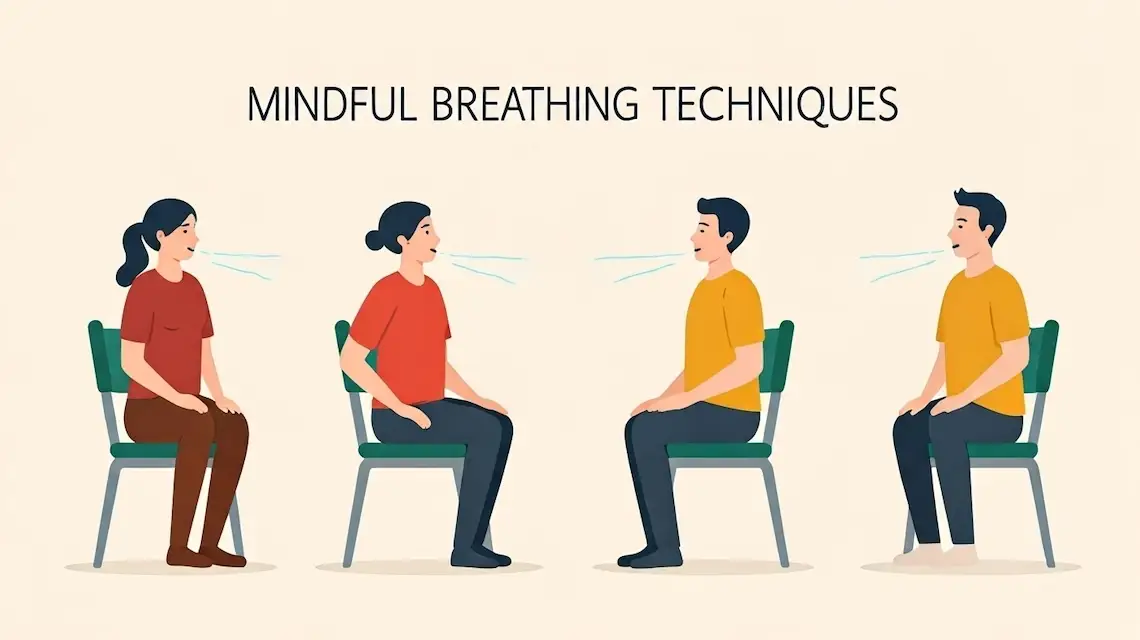
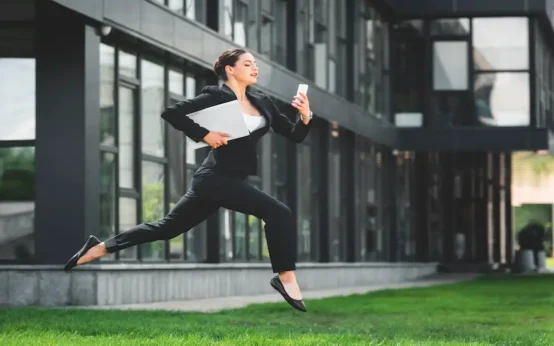 Fitness Tips for Busy Professionals
Fitness Tips for Busy Professionals 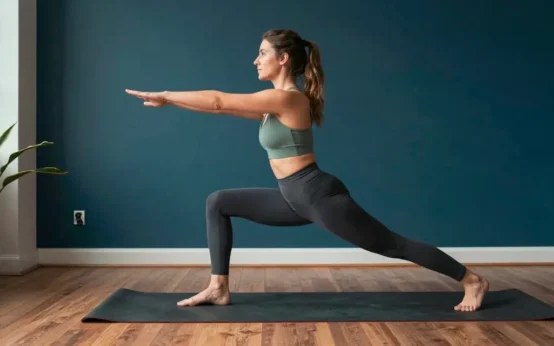 Beginner Cardio Workout at Home
Beginner Cardio Workout at Home 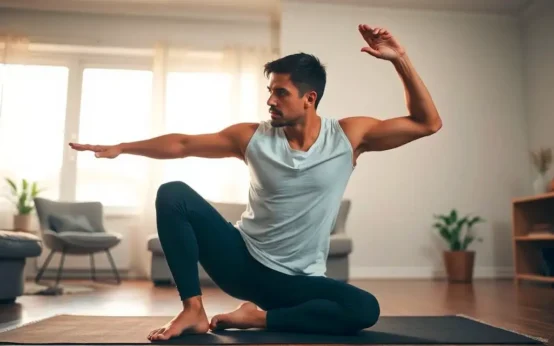 10 Stretching Exercises to Increase Height
10 Stretching Exercises to Increase Height 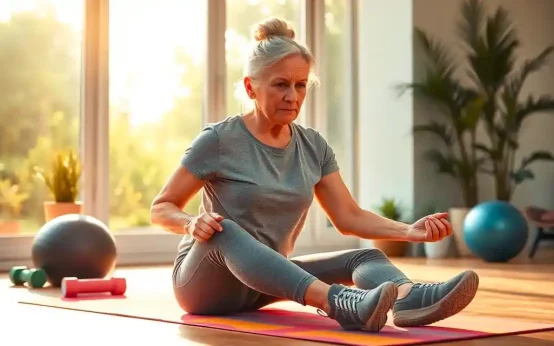 Menopause Workout: A Simple, Strong Plan
Menopause Workout: A Simple, Strong Plan 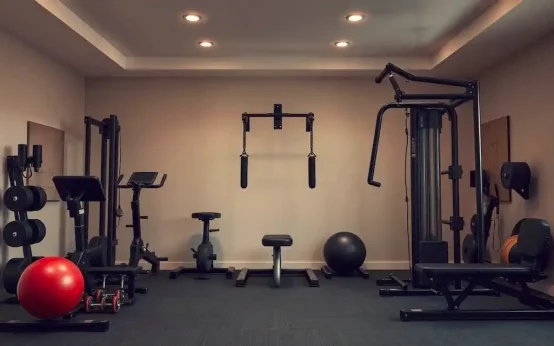 Best Home Gym Workout Equipment
Best Home Gym Workout Equipment 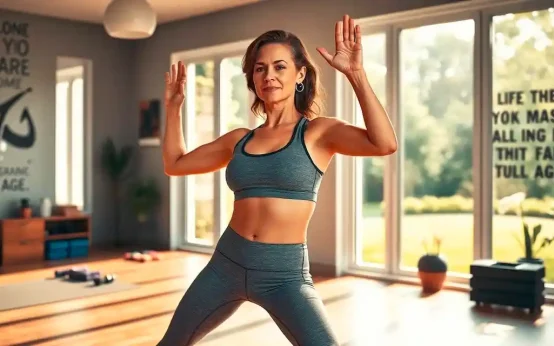 Exercise Tips Help You Look Great for Your Age
Exercise Tips Help You Look Great for Your Age